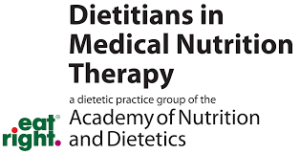What is the diet?
Following a gluten-free diet involves avoiding wheat, barley, rye, and all foods made with these ingredients. There are many naturally gluten free foods, including dairy, seafood, meat, fruits, vegetables, fats, and many grains.
It is very important for your health to follow the gluten-free diet at all times, including when dining out at restaurants, others’ homes, and traveling.
What conditions is the gluten-free diet used for?
- Celiac disease.
- Non-celiac gluten sensitivity (NCGS).
A strict gluten-free diet is the only treatment available for celiac disease and non-celiac gluten sensitivity (NCGS).
Why is the gluten-free diet being recommended?
Celiac disease is an autoimmune disease triggered by gluten ingestion, which damages the small intestine and interferes with absorption of nutrients from food. NCGS is a condition in which individuals report improvement of symptoms following the elimination of gluten from their diet. This diagnosis is only given after both celiac disease and wheat allergy are excluded.
Dining out gluten free
Research before you go
- If eating at a new restaurant, or somewhere you haven’t been in a while, check online to see if there is a gluten-free/allergen-friendly menu.
- Call the restaurant and ask to speak with a manager. Let them know you are interested in eating at the restaurant, and you have a medical condition that requires a gluten-free diet. Then you can ask about the specific foods you are interested in ordering and how they keep food safe in the kitchen to support the health of people with celiac disease and non-celiac gluten sensitivity.
- Alternatively, you can email the restaurant ahead of time and ask how accommodating they can be given your dietary restriction and what available options they have.
If eating at someone else’s home
- Many well-meaning friends and family members may want to make food for someone with celiac disease and non-celiac gluten sensitivity but may not have enough information about the importance of really being critical of all food ingredients and avoiding cross-contact.
- If in doubt, it’s okay to gently thank your friend but decline the food to protect your own health. Consider bringing your own safe, substantial dish as a backup.
- However, you can also try to use these opportunities as a time to educate others about how to properly cook for you so that you can enjoy meals safely at their home in the future. The resources below can help inform them about making food for someone with celiac disease and non-celiac gluten sensitivity in a safe environment.
When in doubt, leave it out
- If you are unsure at any time, it’s best to avoid eating any food that may contain gluten and could cause you to become sick. Keep a snack bar in your bag or car so that you have something safe to eat at any time.
When at a restaurant
- Online reviews and resources are wonderful places to start with your search for a place to dine or travel to, but in the end, you still need to do your own research.
- At the restaurant, ask for a gluten-free or allergen-friendly menu.
- Before ordering, let your server know you have celiac disease, non-celiac gluten sensitivity, or a severe gluten allergy, and if necessary, ask to speak with the manager.
- Consider providing your server with a pocket-sized card explaining your dietary needs, in the appropriate language, for them to bring to the chef (such as from celiactravel.com).
Traveling gluten free
Research before you go
- Before your trip, you can use various apps, blogs, social media, and travel magazines to investigate the restaurants at your destination. See the resources below. You can also check if your hotel has any specific recommendations.
- You may want to research where you can find a gluten-free version of your destination’s signature dish or pastry. You can reach out to these restaurants ahead of time asking the same questions that you would at any other local place.
- You may want to make yourself a loose itinerary to plan out what activities you are doing when, so that you can make some tentative restaurant reservations.
Transportation
- If traveling by airplane, secure a gluten-free meal for your flight either online or by calling the airline ahead of time.
- If traveling by cruise ship, call or email the cruise line in advance to secure a gluten-free meal service for your entire trip.
Accommodations
- If you are staying at a hotel, call or email the hotel in advance to set up certain accommodations, such as a small fridge and/or microwave for your room.
- Consider staying somewhere with a kitchen or kitchenette so that you always have the option to return to your room for a safe gluten-free meal.
- You can also see if your hotel will offer you safe gluten-free take away food for you to bring on your daily outings.
Resources
- Websites: Gluten.org Celiac.org, BeyondCeliac.org, NationalCeliac.org, Celiactravel.com
- Dining out/travel apps: Find Me Gluten Free, Gluten Free Roads
Now it is time to meet with a GI-expert dietitian. To get more information about this topic, find a dietitian in your area using our Find a Health Care Provider tool.
Written by

Erica Zimmerman, MS, RDN, CD
Jessica Lebovits, RD, CDN, CNSC
Reviewed by the DIGID Gluten and Wheat Disorders Workgroup ©2021

Erica Zimmerman, MS, RDN, CD
Jessica Lebovits, RD, CDN, CNSC
Reviewed by the DIGID Gluten and Wheat Disorders Workgroup ©2021


